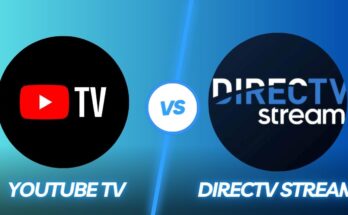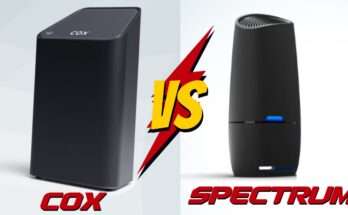Introduction
CenturyLink vs. Xfinity have their peaks and troughs as far as internet service companies. You have many internet bundles from Xfinity, but additional terms and costs exist. Unlike Xfinity, CenturyLink does not even have data limits or yearly commitments, but its alternatives are constrained. Even though CenturyLink’s fiber options are unbeatable in terms of cost and functionality, they are less commonly offered than the considerably weaker DSL service. In 2022, the global broadband providers market will be expected to grow by 2.5%.
While CenturyLink does not raise your pricing or need you to sign an agreement and provides unlimited bandwidth, Xfinity WiFi broadband speeds are quicker and more dependable. Furthermore, Xfinity’s promo rates may initially be a special offer instead of CenturyLink. Continue reading to learn more about CenturyLink vs. Xfinity’s costs, broadband speeds, data limits, and other details.
Overview of CenturyLink Internet
Connectivity, cloud solutions, and access management are just a few of the many services and options that CenturyLink, a leading telecommunications firm, offers customers worldwide. After AT&T and Verizon, CenturyLink is the third-largest technology company in the USU.S.
Enterprise, Microenterprise, and Household are CenturyLink’s three primary product categories. The three classes’ items and services are available alone or in packages. Preconfigured or customized packages are available for purchase.
At the corporate level, the following additional services are offered:
- Services for networking, including software-defined connectivity (SDN), IPI.P. virtual networks (VPN), fiber, Ethernet, and spectrum services;
- Maintained services for software, operating system (OSO.S.), and systems management; security apparatus for the cloud;
- Protection of distributed denial-of-service (DDoS) attacks; analytics; and security monitoring
- Cloud storage for big data analytics, recovery plans, and public, hybrid, multi-, and cloud infrastructure operations;
- Telephony as well as unified communication systems (UCU.C.) services, such as managed VoIP and internet content and online meetings systems; and
- Cybersecurity and building methods and transition ITI.T. consultancy services.
- Additionally, CenturyLink guarantees all home, small- and medium-sized company (SMB), and international enterprise clients around-the-clock customer assistance.
Overview of Xfinity Internet
Comcast Cable Communication, a part of Comcast Corporation, primarily utilizes the name Xfinity as a trademark for its phone service, cable TVT.V., and broadband services. One of the largest USU.S. cable broadband providers is Xfinity. Due to its high-end connection offerings, Philadelphia-based Xfinity has expanded its fan base.
The ultimate connected solution is provided by Xfinity Portals and xFi Gateways, two all-in-one solutions that provide internet and voice access, whole-home WiFi service, network monitoring, control, and performance.
The xFi Advanced Portals, our newest products, include the following general features:
- xFi Advanced Security provides wireless home networks with security.
- Secondary network for Xfinity Hotspot
- Specialized parental controls and wifi management tools (xfi)
- xFi Pods’ enhanced whole-home coverage
- Based on the model, up to 1 Gigabyte (Gb) of bandwidth or more is possible.
- Using an Ethernet port to access the internet (two or four ports)
- One to two telephone service connection
- Automated modifications regularly to enhance control, accessibility, and safety
This specific business now offers its internet connections in 39 states. Using the same cable used primarily for TVT.V. services, Xfinity offers its consumers internet services. As a result, Xfinity provides a limited number of clients with fiber internet and cable broadband.
Comparison of CenturyLink vs. Xfinity’s Broadband Service
DSL and fiber are CenturyLink’s two main internet access options. It also offers fixed wireless subscriptions, although fewer than 1,000 individuals nationally can access them. The DSL network of CenturyLink serves almost 50 million people, as was already mentioned. While actively substituting its copper links with fiber cables, CenturyLink is letting its DSL system gradually disappear. As a result, CenturyLink fiber network is overgrowing while its DSL connection is gradually getting smaller.
The coverage provided by Xfinity is a little more straightforward. The service offers both cable and fiber internet. Given that over 110 million individuals in 40 states have access to cable broadband, most of Xfinity’s consumers also have. Its fiber internet availability is, however, much less spectacular. Although Xfinity wants to extend its fiber network, it is now only accessible to less than 20,000 individuals in a few locations over 19 states plus Washington, DC.
Xfinity vs. CenturyLink: Speed and Broadband Performance
| Plan | Download (Mbps) | Data Cap |
| CenturyLink DSL | Up to 100 Mbps | 1 TB |
| CenturyLink Fiber | 100 or 940 Mbps | 1 TB or no data cap |
| Xfinity Cable | Up to 1,200 Mbps | 1.2 TB |
| Xfinity Fiber | Up to 2,000 Mbps | 1.2 TB |
The velocity and bandwidth throttling offered by these two companies differ significantly in a few crucial ways. Plans for CenturyLink’s DSL internet are limited to speeds of 100 Mbps. At the same time, Xfinity is the undisputed victor. Its fiber package offers up to an astonishing 2,000 Mbps, while the cable services only provide speeds of up to 940 Mbps.
Most Xfinity internet subscribers have faster speeds than those promised by their package. However, remember that specific speeds will change depending on your region and the kind of plan. Additionally, Xfinity offers a somewhat greater data cap than most CenturyLink plans, except the up to 940 Megabits per second from CenturyLink, with no data limit.
Affordability and Package Features for CenturyLink vs. Xfinity
CenturyLink’s Price for Life promise ensures that your monthly fees will stay the same. Budgeting is made simpler by locked-in pricing, but this offer is only valid for services with speeds of up to 100 Mbps.
Of your four choices, three include DSL plans from CenturyLink (up to 20, 40, and 100 Mbps), while the other is a fiber plan from CenturyLink (up to 100 Mbps). It stands to reason to select the package with the quickest speed as they are all equally priced.
While a few of Xfinity’s plans cost a bit more, you’ll also receive faster bandwidth and more selections. You’ll experience faster speeds and fewer outages if you select an Xfinity cable broadband package with the same highest data speeds as the equivalent CenturyLink DSL service.
Conclusion
The global provider of internet services will generate $1.1 trillion in sales in 2022. Due to their outstanding offerings, two sizable broadband internet service providers, CenturyLink vs. Xfinity, have gained enormous popularity. As a result, you may select any of them based on your needs, finances, etc. Before selecting any one of these, make sure that you consider all of your needs.
However, you can choose if CenturyLink is offered in your area. But Xfinity is far superior to CenturyLink’s DSL if a person does not possess accessibility to the fiber network. Choose Xfinity if speed is your priority; however, CenturyLink is a more affordable choice.




